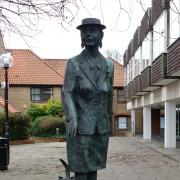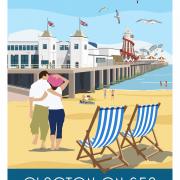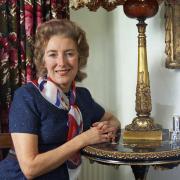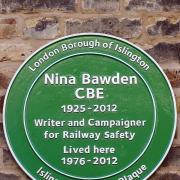The Beautiful Game has travelled across the world, but here in Essex, football as strong roots as you will find anywhere. Stephen Roberts looks at the strength of the game in Essex up and down the leagues
Essex football fans have watched their teams work their way up and down the leagues for generations and the grassroots of football in Essex have produced some of England’s most famous players. But perhaps the most famous moment in football history for an Essex team belongs to Colchester.
Colchester United were at the epicentre of an FA Cup earthquake when the mid-table 4th Division minnows of Colchester, with a team described as ageing pros and journeymen, disposed of the mightiest team in the land in 1971, Don Revie’s metronomic Leeds United.
Such a shock was it that it was described by Geoffrey Green in The Times thus, ‘Miracles are rare and must be savoured: this one in particular will have its place in memory. Great-grandchildren will hear tell of it.’
Dick Graham, the charismatic crew-cut Colchester gaffer, had promised man-marking so tight, his players would accompany their much-vaunted opponents to the loo. He also pledged to scale the walls of Colchester Castle if there was an upset, so he maybe wasn’t counting on his climbing skills being tested.
While this stand out moment remains Colchester’s greatest day, achieving a highest league finish in 2007 (above regional rivals of Ipswich and Norwich) and moving to a new ground in 2008 will also resonate with fans as an historic highlight. For a club with a crest featuring a Roman eagle, Colchester United has had its misfortune too. Weather the Romans would have detested have caused difficulties with gale-force winds almost destroying the Layer Road End in 1938 and the old ground’s highest crowd (more than 19,000) going home disappointed a decade later when thick fog came sweeping in and forced a match to be abondoned.
The county’s other long-established Football League side is Southend, a peripatetic club of five grounds, whose Roots Hall (1955) was built on the site of a sand quarry, council landfill and gas board premises. It was the Football League’s newest ground until 1988. Nicknamed The Shrimpers after the decapod crustaceans fished in the northern Thames Estuary, Southend is a club founded in a pub (the Blue Boar in 1906), rather aptly for representatives of the working man’s game.
That was it for Football League representation by Essex clubs at one time, but nowadays there is the past-master of amalgamations, Dagenham & Redbridge (The Daggers) who officially date from 1992, but have swallowed once famous amateur sides along the way (including Leytonstone, Ilford and Walthamstow Avenue). The modern side’s claim to fame is that it featured in the then world record penalty shoot-out, when Leyton Orient were despatched 14-13 after 28 spot-kicks. I pity the poor lad who missed.
But football in Essex is about so much more than the League teams, that Pantheon of 92 clubs which have traditionally ruled the roost as the professional teams. In fact, far more football is played outside of this august body. Take Braintree, one of the county’s most senior clubs in what is often depreciatingly termed, Non-League football. Interesting tales abound here too. Dating from 1898, Braintree FC are known as ‘The Iron’, referring to the works team of the Crittall Window Company from which they hailed. It wasn’t until 1981 that the Crittall connection was finally extinguished.
Chelmsford City got rather ahead of themselves, dubbing the club ‘City’ from 1938, although the settlement didn’t achieve city status until 2012. No-one seemed too bothered, however. It was all very quaint, with a football club established by the Lawn Tennis & Croquet Club, giving members something to do in the winter. The old ground (New Writtle Street) saw some life, being a barrage balloon site in World War II, then witnessing greyhound racing briefly after the war. One of The Clarets most famous former players was top English goalscorer Jimmy Greaves, who pitched up there for the 1976-77 season.
If Chelmsford claimed to be a city, Concord Rangers, nicknamed The Beach Boys, took a different geographical entity, naming itself after nearby Concord Beach on Canvey Island, apparently becoming the only English team named after a beach.
Grays Athletic are known as The Gravelmen, not the name of a pop-group, but a reference to three Victorian chalk quarries hereabouts. Samuel Pepys recorded in his diary when he visited Grays back in September 1665, that it was a calm morning when he took a wherry and bought a quantity of ‘fine fish’. Pepys did well and so did Grays when they won the FA Trophy (the FA Cup of Non-League football) in successive years (2005 and 2006), but sadly not at Wembly due to the ground’s redevelopment at the time.
Only two sides have won the FA Vase (the FA Trophy’s junior partner) three times and one is Billericay Town. When Dougie Young claimed a hat-trick in the 1979 final, he was the first player to score a hat-trick at Wembley since a certain Geoff Hurst in 1966. Formed in 1880, Billericay has an image of The Mayflower in its club badge as some of the Pilgrim Fathers came from the town.
Canvey Island’s Park Lane ground is low-lying, a few feet below sea-level, which explains how the club’s early records were destroyed in a major flood in 1953. The Gulls only date to 1926, but football has been played on the island since Victorian times, while some of its more recent exponents of the game have appeared in World Cup Qualifying matches for Dominica and Guyana. The world is small these days, even on Canvey. The club was another from Essex to suffer the, ‘what, no Wembley?’ disappointment when they won the FA Trophy in 2001.
One of the wackier nicknames is that of AFC Hornchurch, The Urchins, which is presumably derived from ‘church’. The current side dates from 2005 after its predecessor, Hornchurch FC, closed down. The original club dated back to 1923 when a team was formed as Upminster Wanderers.
We’ve had grounds that flood and ones named after beaches, but is there anything weirder than Heybridge Swift’s Scraley Road, landscaped out of a former carrot field in the mid-1960s? There is plenty of history for a club dating back to 1880, yet, ironically, Swift’s greatest claim to fame may be that reality TV star Mark Wright of The Only Way is Essex, played twice for them in 2011.
Tilbury, the scene of Elizabeth I’s rousing oration at the time of the licking of the Armada is home to a football club dating back not quite as far, but at least to 1895. Appropriately nicknamed The Dockers, Tilbury moved to Chadfields, a former greyhound racing venue, after World War II. A more recent brush with fame came in 1978 when the club reached the Third Round of the FA Cup, losing to Stoke. Stoke’s players were undoubtedly motivated by their boss’s programme notes, relating his sorry attempt to spy on Tilbury at a preceding home game. He got lost trying to find their ground and made it quite clear he didn’t want to return for a cup replay. Stoke won 4-0 and their manager put his A-Z away.
The Jammers is one of the excellent nicknames adopted by Maldon & Tiptree, who amalgamated in 2010. While they may play in Maldon, the jam connection is firmly Tiptree, commemorating an internationally-recognised brand of preserves manufactured in the village by Wilkin & Sons, a family business dating to 1885.
Gary Lineker, household name, legendary goal-poacher and TV presenter, is not usually shy about recalling games he played in, except perhaps for one that took place at the Sportcentre, Harlow in January 1980. OK, so he was young at the time and anonymous on the night, but Harlow claimed quite a scalp, Leicester City and Lineker to boot, in front of a bewildered crowd of over 9,700. Leicester would have drawn no comfort from the fact they had been bettered at England’s first ever sports centre team. Harlow (founded in 1879) had eccentrically chosen their side by committee for their first 77 years, but had a manager picking the 11 by the time Uruguay visited in 1966 for a World Cup warm-up. The South Americans won 6-1, but were less effective when the serious stuff started.
The Essex car industry also made an impact on the local world of football. Redbridge FC originated from two motor companies, Ford Sports (Dagenham) and Briggs Sports (previously Briggs Motor Bodies), both founded in 1934, merging into Ford United in 1959. The club renamed itself Redbridge in 2004, but retains vehicle roots with its nickname of The Motormen.
Does any club in Essex have a more fascinating history than Romford? The original club dates back to 1876, with a second incarnation in 1929, before today’s presence established in 1992. Formed back in the mists of time in halcyon amateur days, the side was good enough to reach an FA Cup quarter-final in 1881 (although they lost 0-15). The later amateur side did well too, reaching the FA Amateur Cup final of 1949 at Wembley, when a crowd of 100,000 (yes, 100,000) saw them lose to Bromley. Romford would fold in 1978 though, and this a club that played home matches at no fewer than 17 grounds over the years. Perhaps Danny Benstock deserves a mention too, a player who scored a goal in 11 seconds in August 1995. Blink and you missed it.
Waltham Abbey, reputedly the burial place of King Harold, has a football team appropriately dubbed The Abbots which formed in 1944. When mighty Manchester City moved from Maine Road to the Etihad, some of their old Maine Road seating headed for Waltham Abbey’s modest ground.
Great Wakering’s club was formed by soldiers demobbed after World War 1 who were finding employment in local brickfields. Its Burroughs Park ground was constructed on the site of 104 disused allotments in 1985 and named after a local farmer and former player. I wonder whether any really old spuds pop up occasionally.
To show just how quaint grass roots football can be, we should finish with Witham Town. Formed in 1876, disbanded in 1914 due to World War I breaking out, reformed in 1918, then disbanded again due to World War II. After its second reformation the club played initially on a cow pasture with a barn acting as changing rooms. I’m sure when Olly Murs played for them, he expected slightly better facilities, even though he hadn’t yet been ‘X-Factored’.
There is more, of course. Below this resides the whole otherworld story of the Essex Senior League. The crowds get smaller, scores get bigger and tales continue to proliferate. But as the new football season kicks off, it is time to catch the action for real.



























